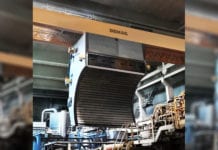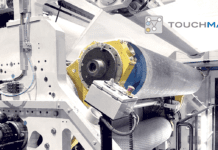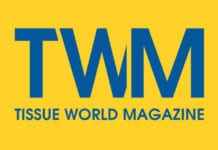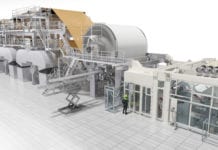News from RISI – Clearwater Paper reported a 3.1% third-quarter rise in tissue product pricing from its new TAD machine in North Carolina, while Kimberly-Clark (K-C) pricing declined 1% on consumer products although volume jumped up by 7%, the companies have said.
The pricing averages were for the third quarter vs third quarter 2013 levels, and were based on earnings reports by three of North America’s largest six tissue paper producers.
Main points from executives included that private label was at least holding ground or possibly gaining slightly, promotional advertising activity remained at a high pace especially among big brand players, and the firms continue an ongoing movement at increasing operational efficiencies in their systems.
Clearwater president and chief executive Linda Massman noted in consumer tissue that “we have faced significant headwinds from decreases in conventional tissue pricing”.
Procter & Gamble reported altering pricing on some bathroom tissue and towels in what financial officer Jon Moeller called a “value equation intervention” in a report to analysts on 24 October.
P&G is North America’s second largest tissue paper producer by capacity. All of P&G’s capacity is in consumer tissue.
On AfH price increases, the first official hike in three years, that began in June and July in North America, K-C chairman and chief executive Thomas Falk told of a “limited benefit” from the increase.
Contacts said the increase is being implemented through yearend.
“(K-C is) seeing some price erosion in the low end of that business and so any net price gain has been pretty minimal at this point in time. I think you’re seeing a fairly stagnant economy which is probably not helping much on that front,” Falk said, referring to AfH pricing.
Clearwater’s Massman said the firm expects 3-5% savings on warehouse and transport costs, starting in second quarter next year.
She said the firm’s leaders would “continue to sharpen our pencils on the efficiency side.”
Massman also told of increased promotional activity for the “vast majority” of this year from brands and expected “continued competition” from new tissue paper machine capacity set to start up into 2016 in the USA.
New capacity in 2015-16
Based on public announcements, almost 350,000tpy of new capacity would start up in the next six quarters. Another 112,000tpy could be started by firms that have been named publicly, but have not made public announcements about their new machine plans.
Further, another 150,000tpy of potential new capacity comes from unidentified “confidential” projects from companies, contacts said.
If all the PMs are built, the capacity add over the six quarters would be 600,000 tonnes.
The increased ad spend was cited by K-C for its 7% consumer tissue volume increase in the quarter. Also, the launch of Viva Vantage paper towels earlier this year helped, company officials said.
On consumer tissue, Falk said K-C was no longer reducing sheet counts on rolls, which started in the first half of last year, and pushed up advertising spend for promotions on the company’s tissue products.
“We did step up promotional activity from second quarter where we were not competitive in the marketplace,” Falk said.
“It was competing with other branded activity in the market where some of our competitors have stepped things up in the second quarter. We picked it up in the third quarter and you saw that show up in the volume growth.”
Falk claimed that K-C increased volume at the expense of other brand players rather than private label.
Domtar, which completed two key acquisitions in 2013 of Spain’s Indas and Associated Hygienic Products to expand in personal care incontinence absorbent products and the diaper segment, might eventually connect into tissue products, company president and chief executive John Williams said on 23 October.
Answering an analyst, Williams said: “We’ve always said growth is what we’re looking for and growth really in absorbent products. And, to date, we’ve been able to stay a pretty pure play on personal care.
“If we felt that the M&A pipeline was – pardon the pun – drying up on us, we would look on a broader spectrum and, patently, if we’d look in a broader spectrum, tissue would be in there.”
Clearwater Paper financial officer John Hertz said the firm was considering a Master Limited Partnership (MLP) for the firm’s tissue paper machines.
“Though the company said they are in the ‘early innings’ of exploring the structure change, they believe that much of the pulp and paper segment would qualify as well as some of the paper machine assets in tissue,” Vertical Research Partners said in a note to investors.
“We see no reason that Clearwater couldn’t … take advantage of the MLP structure. We believe that if the company can get a turn improvement in their overall (averaged) EV/EBITDA multiple as a result of moving to an MLP structure, barring any changes in pricing versus our current predictions, the stock could trade north of $75 per share.”
CLW’s share price was $67.44 mid-day on Oct. 22. Clearwater operates 14 tissue machines at 10 mills in the US and Canada.
In a C$1.07 million project, Cascades inaugurated Alain-Lemaire Solar Park which will supply 1 MWh/yr of energy to Cascades mills in Kingsey Falls.
The company called the arrangement a “first in the pulp and paper industry.” Rackam installed a concentrated solar power system at the park that is to reduce the natural gas consumption in Kingsey Falls.
Cascades operates one recycled board machine at one mill with 102,000tpy of capacity, and another mill with three PMs with 120,000tpy of tissue paper capacity for AfH and consumer products.
The park is named after Alain Lemaire, the last of the Lemaire brothers who have been the company’s CEOs since it started doing business. Lemaire was succeeded by Mario Plourde in 2013.






























